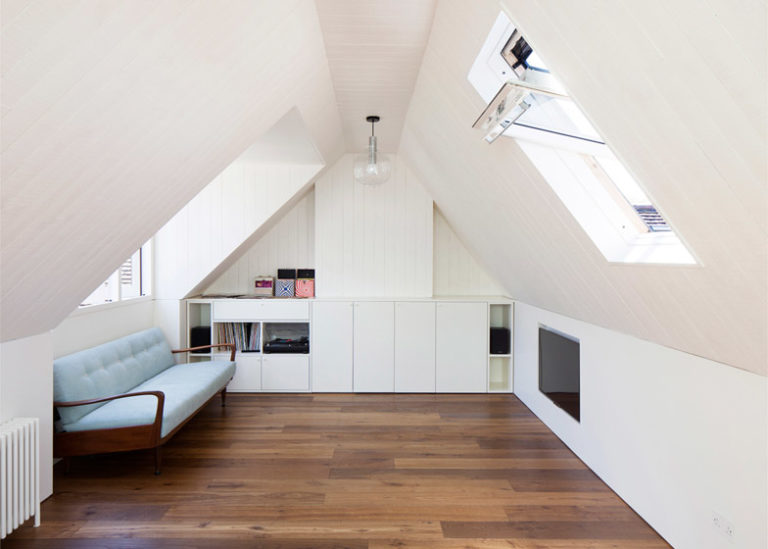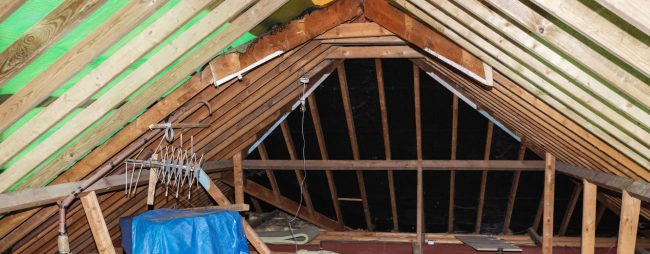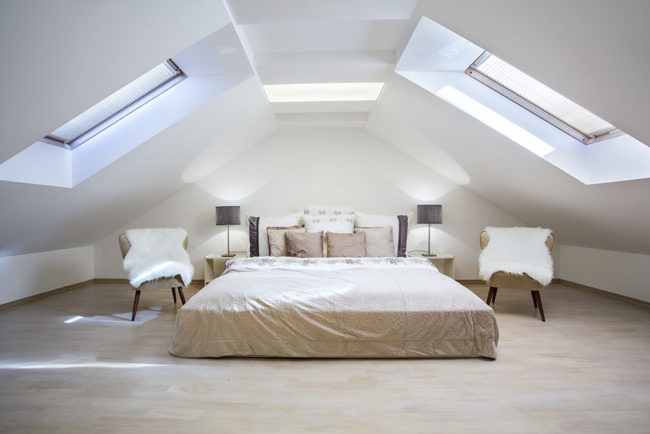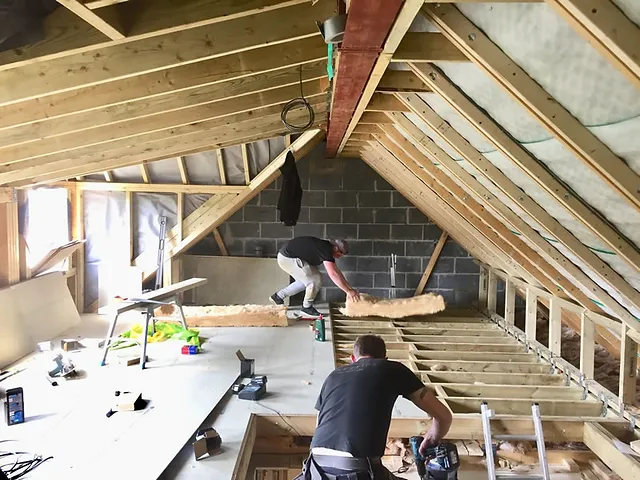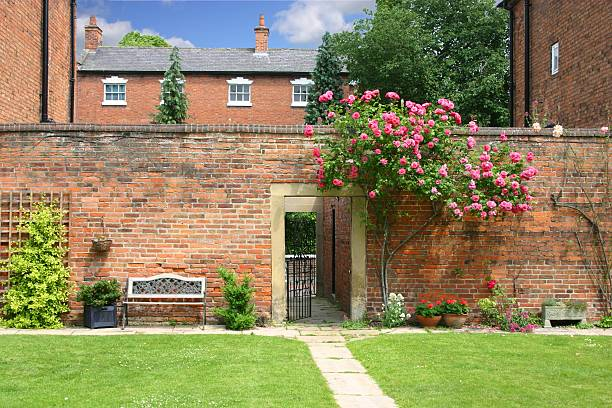Get A FREE Quote Now
Click the button below to receive your complimentary, no-obligation quote from our local specialists.
Loft conversion is the most popular choice for people trying to create an extra living space in the UK. Lofts are traditionally considered damp areas that house old furniture and Christmas decorations, among other items. However, a loft can give you the extra space you need without extensions that consume part of your garden.
Before laying out a simple step-by-step procedure to follow when converting your loft, note that it’s a complex undertaking that requires extensive experience and an “I can do it myself” attitude. If you are ready to convert your loft, then there are certain things you’ll need to consider before you commence work.
The design issues you will need to consider include:
- The height of your ceiling
- The type of loft
- The services you want to install
- Lighting issues
- Whether you need planning permission
- Building a blueprint that indicates the strength of the floor and fire escapes.
Most loft conversions don’t require a planning permit. You must obtain permission if your loft design will alter your roof space. Nevertheless, you cannot leave matters to chance; hence, check with your local council or planning officer to know whether you require a planning permit. As you read the guide, more about planning permission and considerations will be discussed.
Get A FREE Quote Now
Click the button below to receive your complimentary, no-obligation quote from our local specialists.
Step 1: Know Whether Your Loft Is Suitable For a Conversion
Some lofts can’t be converted. Before you plan for the conversion, conduct a brief survey to establish whether your loft is suitable. You should look for roof structure, height, space, chimney or services, and felt.
Roof structure: Do you have a traditional cut rafter roof, a purlin roof, or a trussed roof?
Height: Does your loft have enough height? The minimum height you’ll need for a traditional roof is 2.2 to 2.4 meters. The minimum height for the modern trussed roof is 2.4 to 2.6 meters.
Space: Is the loft space enough to be converted into a usable roof?
Services or Chimneys: You should ensure no services or chimneys run through the loft space and no movement is needed.
Felt: Is your roof weatherproof, or has a felt under the tiles? If your roof is not fitted with a felt, you will see the backside of the roof tiles. Roofs with felts have black bituminous paper placed under the tiles and battens.
If your loft meets all the specifications stated above, the next step is to determine the type of loft conversion you could have.
Step 2: The Types of Loft Conversions
Three factors determine the type of loft conversion you could have. These factors include your roof type, the intended use of the loft, and your budget. Based on the aforementioned factors, you have three types of loft conversion to consider. They include internal loft conversions, dormer loft conversions, and conversions that need the removal and restructuring of the roof.
Internal loft conversions are the most budget-friendly and require minimum expert intervention. Nevertheless, dormer loft conversions are the most preferred in the UK because of their extra space and ease of building them. Loft conversions that require complete removal and restructuring are likely to cater to all your needs, but they are the most expensive and require expert builders.
Internal Loft Conversions
Roof lights are the cheapest loft conversion because they are built by simply converting the existing loft space. These types of loft conversions require very few changes to the roof space. The alterations made while constructing roof lights include cutting out windows on the existing roof slope, insulating the loft, and strengthening the floor.
Apart from the overhead windows, all the main changes, such as strengthening the floor, adding a staircase and insulating the loft, are done internally. This means that you don’t need planning permission when converting your loft into a roof light.
Dormer Loft Conversions
These types of conversions require the addition of dormer windows to increase the space in the roof to accommodate a standing grown-up. Dormer loft conversations are usually added at the back, but you must obtain a planning permit. Dormers can also be added to the front or sides of your house.
After a dormer loft conversion, the additional space created is large enough to be used as an additional bedroom, home office or study room. If you opt for a dormer loft conversion, you can choose from five types of conversions. They include single dormers, full-width dormers, side dormers, L-shaped dormers, and Hip-to-Gable dormers.
Single Dormer: These types of dormers are preferred in areas with strict conservation rules. Two single dormers can be used to add symmetry to your property and increase space.
Full-Width Dormer: This type of conversion results in extra space and a unique type of loft space.
Side Dormers: Side dormers are suitable for increasing the head height of a property with hipped roofs.
L-shaped Dormer: This type of conversion works on specific properties, such as Victorian properties, with an extension to the rear.
Hip-to-Gable: Building this type of conversion involves replacing one or a couple of hips with a gable wall. The roof is then extended to cover the gables, creating an extra space to accommodate a standing grown-up.
Loft Conversions That Need the Removal and Restructuring of the Roof
Mansard conversions: These types of conversions are done on one or both slopes of the roofs, whereby both slopes are replaced with new structures with very steep slopes, almost as upright as the walls. The steep slopes are covered with an almost flat roof. This type of conversion is suitable for houses with roofs that leave little space in the loft. You need planning permission to have a mansard conversion.
Prefabricated loft: This type of conversion works well when the vertical space inside a roof is limited. Fabricated loft conversion enables replacing the existing roof structure with a larger one. Additional resources can be found in our new roof costs article.
Get A FREE Quote Now
Click the button below to receive your complimentary, no-obligation quote from our local specialists.
Step 3: Changing the Roof Structure and Floor Support
Most roofs are built with internal support structures located in the loft. All the roof support in the loft has to be removed and replaced with new ones that don’t occupy the space available in the loft.
We have discussed the different types of loft conversion you could opt for. However, the one thing they all have in common is that the ceiling can’t act as a floor. Turning the ceiling into a floor requires additional support. This is achieved by fitting new support alongside the old roof support structure. The support is slightly raised to avoid contact with the ceiling plasterboard.
The support is usually raised 200mm or 225 mm above the existing ceiling joints forming the floor structure. Depending on the width of the new support, it will either rest directly on existing wall plates or newly installed beams.
In smaller loft conversions, the floor support also supports the sloping rafter. This is attained by building a small timber stud wall 1 meter to 1.5 meters high between the floor support and the sloping rafters. After building the support structure, removing the internal struts and braces is safe.
Step 4: Loft Conversion Stairs
Designing stairs for a loft conversion project is one of the challenging parts because the space for the staircase is limited. Having narrow, winding stairs is the most common staircase design, but this may be impractical because it’s difficult to move furniture into a loft with a narrow staircase.
Moreover, building custom staircases costs approximately ten times the cost of a standard staircase. You should consider the preceding factors when planning the staircase design for your loft conversion project.
If you need an advanced staircase design, it’s prudent to have the staircase design approved by the Building Control officer before proceeding. Your loft staircase design should lead to an external door or hall. If you opt for an open-plan staircase design where the staircases are located in a room, you must change the plan by installing a new partition wall or alternative escape routes.
Step 5: Building Windows and Attracting Natural Light
When fitting windows for your loft conversion project, you don’t have to make significant structural alterations to accommodate skylight windows and roof lights if it’s your first time handling a loft conversion project. In most cases, windows are fitted on either side of the roof-flight.
One of the most preferred alternatives is dormer windows, which are also independent structures because they have walls, a roof and windows. In many cases, Dormer windows are fitted at the back of the house, which means that most dormer windows don’t require planning permission to build. However, if dormer windows are located in the front of the house, planning permission is required, which is why most people opt for roof-light or skylight windows.
Fitting dormer windows may be necessary if you want to increase the headroom in the loft and provide a usable space. When constructing a dormer window, your loft will be exposed to the weather elements, and it’s good to have temporary sheeting for protection.
Step 6: Upgrading Your Loft for Fire Safety
A loft conversion project is less likely to block your fire escape if you live in a bungalow. Nevertheless, you should ensure the windows are spacious enough to be used as an emergency exit. If your loft conversion will create an extra storey, then there are issues you will need to handle.
The additional floor will require at least 30 minutes of fire protection, which could mean having an additional layer of plaster below the ceilings, and the loft room will also have to be separated by a fire door at the top or bottom stairs. Moreover, you’ll also have to install one large escape window in every room. Some types of skylight windows are designed with an escape plan in mind.
Automatic door-closing devices are no longer used in homes because they put children at risk; they can trap children’s fingers. The best solution is replacing the existing doors on the stairway, i.e. the doors on the ground and first floor should be replaced with fire-resistant doors. You should indicate this on your loft conversion design for Building Control.
It’s a good idea to have mains-powered smoke alarms installed on every floor of your house and interlinked so that all alarms go off when one is activated.
Read more: loft conversion fire regulations.
Step 7: Loft Conversion Insulation
The authorities have increased energy efficiency standards over the years, which means it’s now more difficult to insulate your loft than before. If your conversion includes replacing the roof tiles, you can place insulation between the rafter and the covering. This gives you good airtight insulation.
If you choose to replace the roof, the sloping ceiling will require insulation fitted between the rafters and on the underside of the rafters. The insulation should be as thin as possible because the plasterboard must be fitted to the rafter through the insulation on the underside.
When choosing insulation, go for high-performance insulation; for instance, a form or board should be used to cover all the areas that need insulation. The partitioning walls and dormers also need to be insulated using similar materials.
Further reading: how to insulate a loft conversion and the best loft insulation.
Step 8: Insulating Your Loft against Noise Pollution
The newly constructed floor in your loft will need soundproofing, and this can be achieved easily by placing a mineral fibre between the supports. You should use heavier, denser materials for sound insulation and not the lighter materials used for thermal insulation. The internal stud partition between bathrooms and bedrooms should also be insulated using heavy soundproof material.
Step 9: Lighting Your Converted Loft
Lighting a converted loft requires including different light sources, just like the other rooms in the house. Some of the light sources you need include ambient lights that can be used during the day, task lights used for things like reading and working, and accent lights, which improve the atmosphere of the lighting.
Track lights and downlights are suitable for sloping ceilings.
Step 10: Ventilation
Maximising energy efficiency requires making the roof space as tight as possible. However, balancing between energy efficiency and ventilation requires controlled ventilation to prevent water vapour from condensing.
Get A FREE Quote Now
Click the button below to receive your complimentary, no-obligation quote from our local specialists.
Step 11: Heating
Having an extension will definitely increase the heating requirements for your house. A quick solution is to upgrade your boiler. Other alternatives include installing heat radiators, underfloor heating, or combining these methods. However, if your loft conversion added an extra bathroom, you will definitely need a boiler upgrade.
Step 12: Plumbing
Plumbing is crucial in conversions that add an extra bathroom. The location of existing plumbing services should be considered before the building commences. A quick solution is to supply your newly converted loft with plumbing services by branching off from the existing plumbing system. This can be done using flexible plastic piping.
Step 13: Electrics
Electrical alteration may be required during a loft conversion. You can extend the existing circuit depending on the condition and age of your current system. In some cases, you may require new circuits and distribution boards. You should get sound advice from a certified source.
Step 14: Regaining Lost Storage
You lose some storage space when you turn your loft into a bedroom, bathroom, bar, or office or put it under any other use. You can create storage spaces behind the partitions. If you decide to turn your loft into a bedroom, you can install built-in wardrobes for extra storage.
Now that you know the types of loft you could opt for and the procedure for converting lofts. Let’s look at some of the frequently asked questions to help clarify some pertinent issues.
Further reading: loft conversion storage ideas.
FAQs on Loft Conversions
Should I Obtain A Planning Permission Before Converting My Loft?
As noted earlier, most loft conversions are permitted development because you are not changing the blueprint. Nevertheless, your loft conversion design will have to adhere to a number of regulations. Check with your local planning officer to know the rules before you start working.
Do I Need To Get An Approval From The Building Regulations?
Of course, you need the approval of the Building Regulations because a control survey officer will have to inspect your construction at different stages and give you a certificate upon completion and final inspection. If the requirements fall under the Party Wall Act, people living in terraced or semi-detached homes will have to notify their neighbours about the construction plans.
How Do I Design My Loft Conversion?
You are presented with two options when shopping for a designer for your loft conversion project. Working with an architect or designer is the best option for people interested in converting their loft by themselves. This option allows you to tailor the design to your exact preferences. Moreover, working with an architect or designer is suitable for people working on a small loft conversion project.
The designer or architect you are working with will create drawings. You can put the designs to tender, especially if you need to hire a structural engineer.
The second option is hiring a design and building company. This option is prudent for people looking for an all-inclusive service and are not interested in a “Do It Yourself” type of conversion.
Get A FREE Quote Now
Click the button below to receive your complimentary, no-obligation quote from our local specialists.
How Much Does It Cost To Convert A Loft?
Several factors determine how much you will spend when converting your loft. These factors include the structure of your roof, the available space, and whether significant alterations are needed to complete the project. The prices discussed below are estimates of the cost you will likely incur depending on the type of conversion you opt for.
Converting Your Loft Into A Room
This is the cheapest loft conversion that could cost you £15,000. The most important works involved in this type of conversion include:
- Reinforcing the floor
- Adding a couple of skylights
- Adding insulation
- Building a staircase to the loft
- Fitting electric appliances like heating and lighting
- Installing fire safety measures to adhere to building regulations, such as smoke alarms and fire doors
Dormer Loft Extensions
Building a dormer loft extension is similar to converting your loft into a room but with the exception of dormer windows. The windows increase the floor space and give extra height. This gives more options when you are constructing stairs.
Constructing a dormer loft extension can cost you approximately £20,000. If you opt for a double bedroom conversion, then you may have to spend from £35,000 to £45,000.
Conversions that require the alteration of the roof structure are the most expensive. This type of conversion requires professional builders and the approval of planning permission. You are likely to spend £40,000. More in-depth info can be found in our loft conversion prices post. House extension cost is another informative piece we published.
Get A FREE Quote Now
Click the button below to receive your complimentary, no-obligation quote from our local specialists.
Do I Need To Buy Insurance For Self-Loft Conversions?
You need to arrange for insurance if you are going to do the loft conversion by yourself. The insurance will cover the new works and the existing structure. Most home insurers never cover the loss or damage to property when it’s altered.
Conclusions
If you have successfully converted your loft into an attractive living space, it will add value to your home. Extended lofts not only increase the price of your home but also create much-needed extra space. For instance, a survey done by the Nationwide Building Society found that loft conversion increases the value of your house by 22%. This is a significant increase given the fact that you don’t have to lose part of your garden during the extension.
The above discussion shows that converting a loft into a more helpful space requires careful planning, budgeting and execution. You can use this guide for your loft conversion project. Just make sure you follow the guide carefully and make all the preparations before starting work. Failure to do so may cause you to incur unnecessary losses. Moreover, it’s prudent to have insurance coverage to protect you against any accidental losses during the construction. However, if you are not confident in your skills, you should hire a professional architect to ensure you get a quality loft conversion that adds value to your property and stands the test of time.
Related articles
- Are loft conversions worth it?
- How long does it take to convert a loft?
- Do loft conversions add value to your house?
- Minimum loft height for conversion
- Bungalow loft conversion
- Semi-detached loft conversion
- types of loft conversion
- loft conversion cost
- DIY loft conversion set-by-step guide
- Storage ideas for loft conversions

